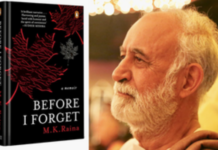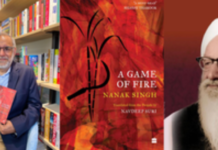By Ananya Das
 Book: Pull of Pulses Full of Beans; Author: Salma Husain and Vijay Thukral; Publisher: Niyogi Books; Pages: 204 pages; Price: Rs 750
Book: Pull of Pulses Full of Beans; Author: Salma Husain and Vijay Thukral; Publisher: Niyogi Books; Pages: 204 pages; Price: Rs 750
“Looks are deceptive”, as the saying goes, and author Salma Husain, armed with her new book, “Pull of Pulses Full of Beans”, is all set to prove the saying true as she chose lentils as the protagonist.
Lentils or pulses, known as “daal” in Hindi, isn’t something one would like to make the focus of his or her book. But Husain, along with Chef Vijay Thukral, who calls lentils the “mother of Indian cuisine”, has used it as the key ingredient of her recipes in this offering.
The book is in eight sections — soups and salads, snacks and savouries, pulao and rice, daals, favourite and winning flavours, international recipes, breads and rotis, and sweet dishes. The recipes have also been well explained — also what the preparations are called in different states.
The book also has a detailed description of the combining of spices and its results, a glossary of English-Hindi terms for the ingredients, measurement units and oven temperature guides, among several other lists.
However, this is a lot more than just a recipe book. The authors have dived deep into the history of lentils, their use — beginning from the earliest of times down the ages worldwide, including the sway they hold in India.
Each recipe has been carefully handpicked, has a very special background and a unique story. While some are exotic flavours from the mountainous regions of Himachal Pradesh and Uttarakhand, several come from different communities like Sindhi, Konkani and Parsi. Dishes from Italy, Morocco, Pakistan, Iran and Nepal also find a place in the book.
Apart from dishes that were the favourites of Mughal emperors — Akbar, Jehangir, Aurangazeb and Bahadur Shah Zafar — the journey touches on the palates of the British during their rule in India. Contrary to popular belief, Mughal Emperors did not only feast on the non-vegetarian dishes; they were connoisseurs of something as basic as lentils.
The author has even included recipes that were favourites of some of the Mughal emperors — Khasa tilaai (paheet) (plain skinned yellow lentil) was special for Akbar; Lazeezan (Khichdi of green gram and lamb) was enjoyed by Jahangir; Qubooli (Bengal gram pulao) was an all-time favourite of Aurangazeb; and Missi roti (Bengalgram bread) was Bahadur Shah Zafar’s preferred bread.
Amidst the sea of exotic dishes, here are some that caught my attention: A mouth-watering spread of shami kababs (mince meat patties), kabab-e-khasgi (special lentil kabab), and ankurit daal ke kabab (sprouted lentil pattues); khilwan daal (dry white lentil skinned) — a traditional cuisine of the Kashmiri Pandits; a unique dish, manali aru daal (chikpea and unripe peach) and chana madra (chickpea and yoghurt).
A few others that I would like to include: A traditional Multani daal called “saat chhaunke ki daal” (lentil with seven temperings); daal ka dulha (lentil with dumpling); doli ki roti (stuffed fermented bread), and a sweet dish sanathana (combination of lentils, molasses, and coconut dessert).
The dedication behind this book is evident. Husain said that while in Kentucky she got a recipe from a friend at a cafe, another from an Arabian co-passenger during a flight to the US, she found in Iran a recipe from an Iranian chef. Some recipes are from an ashram in Rishikesh, others vary from street delicacies to recipes from festivals, weddings and even a 17th century cookbook “Alwan-e-Nelmat”.
Husain has even selected seven types of lentils — crowned them with the title of “popular jewels” and has spoken about their origin, the rich history, health benefits, nutritional values and how they are made in different states.
And did we know that a lentil festival exists and that too at the national level: The National Lentil Festival which takes place in the US at Pullman in Washington State. The festival, which started in 1989, was originally an after-harvest celebration for the lentil farmers of the state’s fertile Palouse area. Today it attracts 26,000 people to a town of 20,000 – and ends with a lentil cook-off… and the coronation of a little lentil king and queen.
At a time when chefs and authors are trying to churn out innovative dishes using either a non-vegetarian base or exotic vegetarian ingredients, Husain chose a run-of-the-mill subject to work on and has raised the bar of one of the simplest fares of the world.














